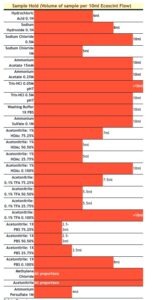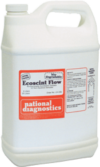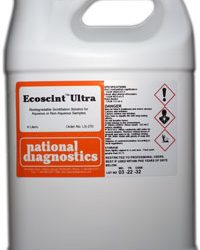Liquid Scintillation
Ecoscint Flow
$235.00 – $948.00
Quantity discount when you buy 4 or more 4 liter bottles
Catalog Number: LS-288
- Ultra-High Sample-Hold Flow Cocktail
- Low Viscosity
- Non-Gelling
- Ultra-High Sample Hold (1:1 Cocktail to Sample)
- High Counting Efficiency
Description
Quantity discount when you buy 4 or more 4 liter bottles!
Catalog Number: LS-288
- Ultra-High Sample-Hold Flow Cocktail
- Low Viscosity
- Non-Gelling
- Ultra-High Sample Hold (1:1 Cocktail to Sample)
- High Counting Efficiency
Formulated for multipurpose flow applications, Ecoscint Flow represents the utilization of National Diagnostics’ new advances in scintillation fluid chemistry to create a low viscosity cocktail. Ecoscint Flow accepts a wide range of HPLC gradients at a 1:1 ratio, providing high counting efficiency (25% 3H efficiency at 1:1 cocktail/sample). Even difficult samples such as 0.1N NaOH mix rapidly to yield a clear, nonviscous emulsion.

Additional information
| Weight | 45 lbs |
|---|---|
| Dimensions | 15 × 10 × 13 in |
Safety Overview
Safety Summary (see SDS for complete information before using the product):
Appearance and odor:
Clear liquid with blue phosphorescence and mild odor
Irritating to eyes and skin.
In case of contact with eyes, rinse immediately with plenty of water and seek medical advice.
EMERGENCY OVERVIEW – IMMEDIATE HAZARD
Phenyl Xylyl Ethane (PXE)
MAY BE IRRITATING TO THE SKIN, EYES, AND RESPIRATORY TRACT.
Primary Alcohol Ethoxylate
NO INFORMATION FOUND.
Butoxy Ethanol
CAUTION! SEVERELY IRRITATING TO THE EYES. IRRITATING TO THE SKIN, NOSE THROAT AND RESPIRATORY TRACT. TOXIC IF INHALED, INGESTED OR ABSORBED THROUGH SKIN
- Waste Disposal Issues in Scintillation Counting
- The Complete Scintillation Cocktail
- Radioactive Emissions and the Use of Isotopes in Research
- Preparing Tissue Samples for Scintillation Counting
- Preparing Samples in PAGE Gels for LSC
- Mechanism of Liquid Scintillation Counting
- Measurement of Radiation and Isotope Quantitation
- Liquid Scintillation Signal Interpretation
- Liquid Scintillation and Radiation Safety
- HPLC Flow Counting
- Counting Samples on Cellulose-Ester Filters
- Counting Samples from TLC Plates by LSC
- Counting Efficiency and Quenching
- Counting Carbon Dioxide by LSC
- Chemiluminescence and Static Electricity
- Assaying Discrete Samples by Liquid Scintillation Counting



